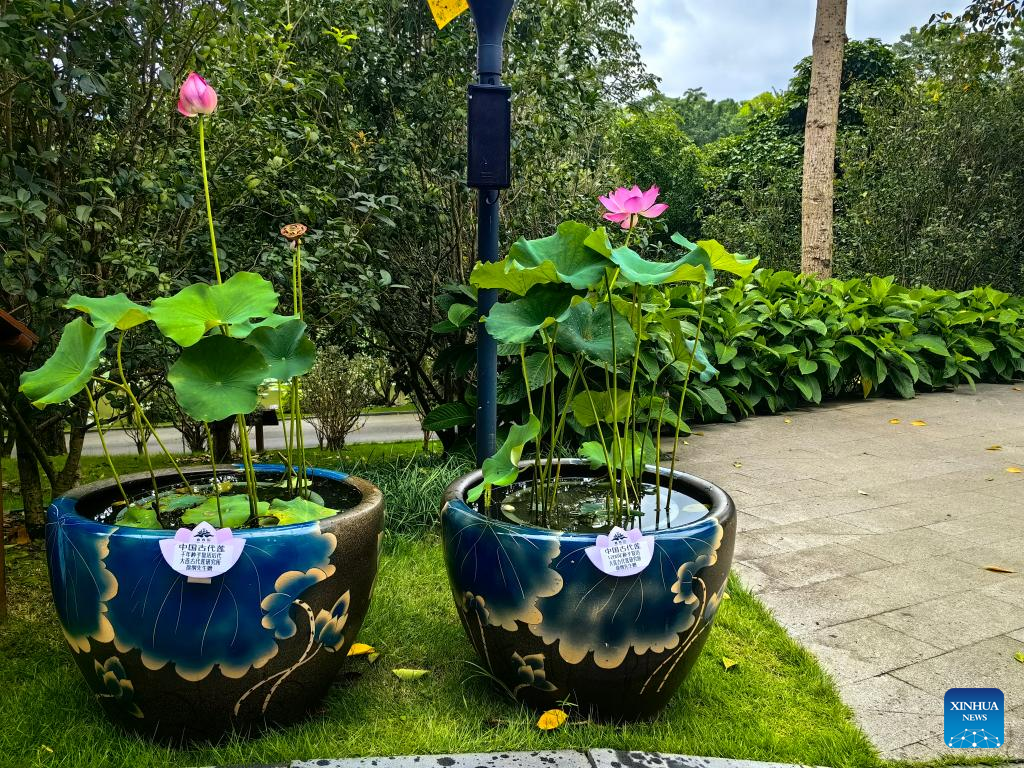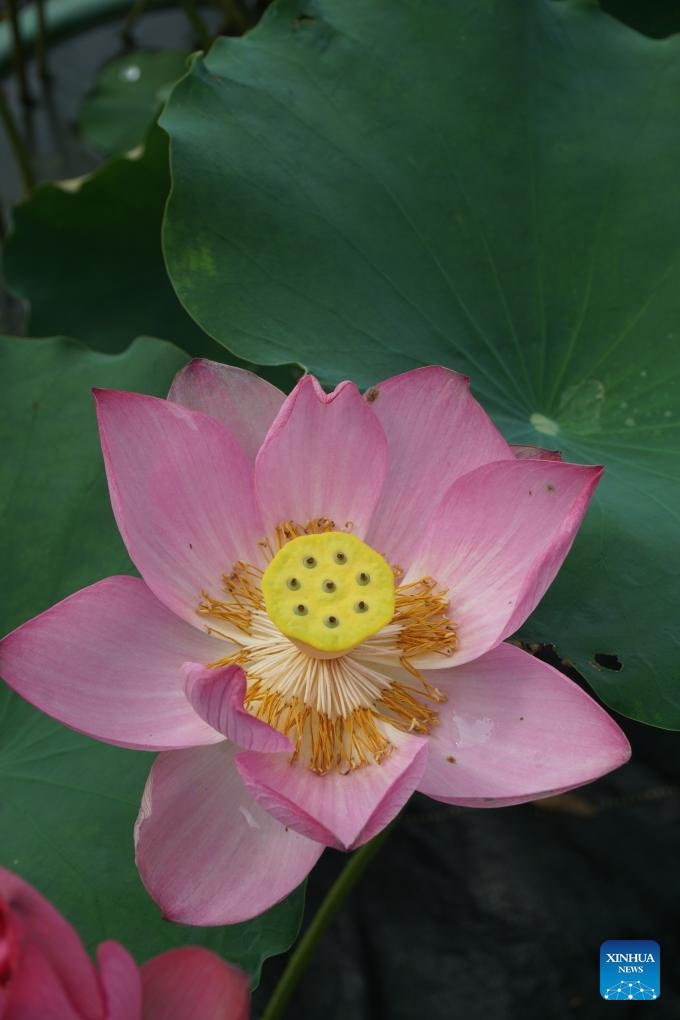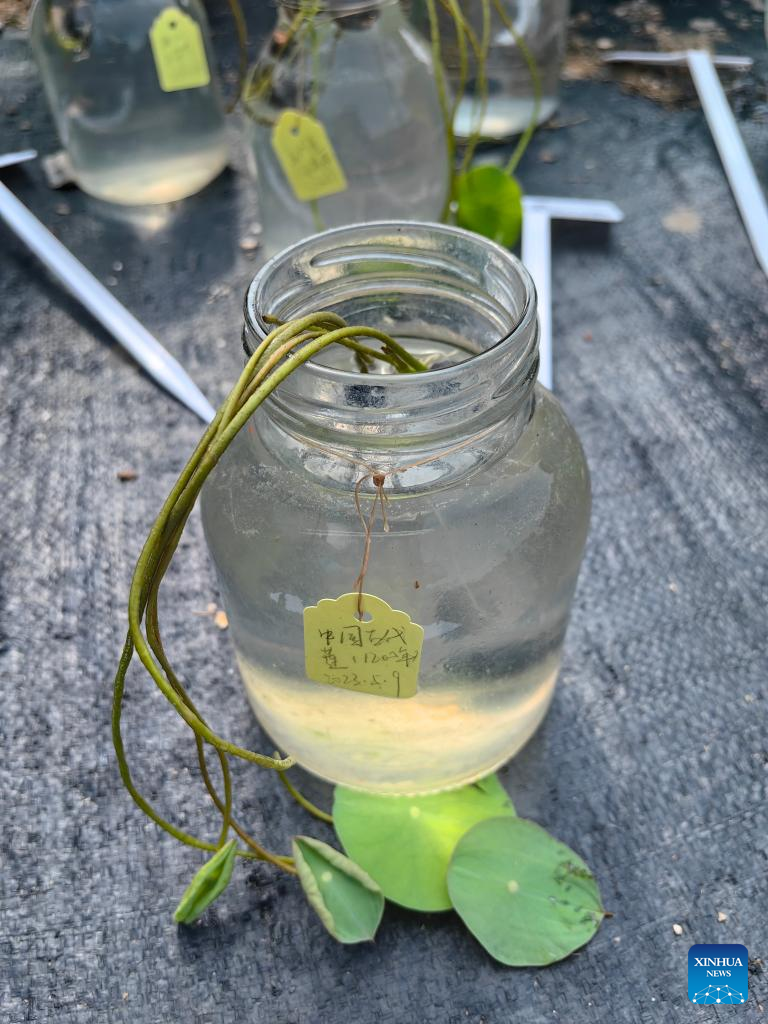
Lotuses growing from ancient seeds are displayed at the Nanning botanical garden in Nanning, south China's Guangxi Zhuang Autonomous Region, June 18, 2024. (Xinhua)
NANNING, June 25 (Xinhua) -- After lying buried for 1,200 years, a lotus seed has grown into a blooming flower in a southern Chinese city, revealing the ancient appearance of a flower that has featured prominently in Chinese poetry and cuisine.
The lotus, displayed at the Nanning botanical garden in Nanning, capital of Guangxi Zhuang Autonomous Region, grew from one of the three seeds excavated from northeast China's Liaoning Province. Carbon-14 tests have identified them as around 1,200 years old.
Since May last year, botanists from the Guangxi research institute for subtropical plants have been attempting to revive the seeds. They carefully cut open the seed shells to facilitate sprouting before placing them in a carefully monitored environment. Eventually, two seeds sprouted, and one blossomed for the first time last month.
Lotus is a synonym for purity and integrity in traditional Chinese culture, with a Song Dynasty (960-1279) article lauding it for "rising unsullied from mud," while its seeds and roots are common ingredients in Chinese cuisine.
China has a long history of bringing centuries-old lotus seeds back to life. Ming Dynasty (1368-1644) records have documented the process of reviving petrified lotus seeds of unknown age.
More recent revivals of ancient lotus seeds often involved lab cultivation. In 2019, a lotus flower bloomed at the Old Summer Palace, or Yuanmingyuan, in Beijing, after scientists worked on its seed that had been underground for over 100 years.
Wei Miaoqin, researcher with the institute, said lotus seeds feature a multi-layered structure that seals off water and air. This allows them to remain dormant for over a millennium if kept in a dry, cool and sealed environment.
Resurrecting these ancient seeds has allowed people today to observe up close the ancient flowers, which feature fewer petals than their modern varieties, Wei said.
"It's like a time travel experience where we are looking at the same flower once appreciated by our ancestors," she added. ■

This photo taken on June 1, 2024 shows the blossom of a millennium-old lotus seed at the Nanning botanical garden in Nanning, south China's Guangxi Zhuang Autonomous Region. (Xinhua)

This photo taken on May 19, 2023 shows the millennium-old lotus seeds being revived by researchers at the Nanning botanical garden in Nanning, south China's Guangxi Zhuang Autonomous Region. (Xinhua)



